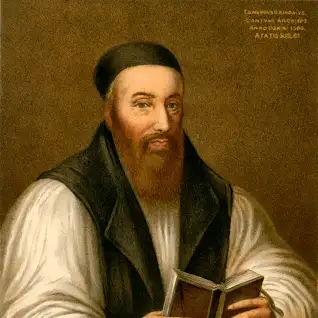2c: Development of Protestantism
1/17
There's no tags or description
Looks like no tags are added yet.
Name | Mastery | Learn | Test | Matching | Spaced |
|---|
No study sessions yet.
18 Terms
Evidence that Anne Boleyn was important to the development of Protestantism
promoted key reformist thinkers and gave money and patronage to them
intervened in cases where reformists had been accused if crimes for their faith
Advocated Thomas Cranmer for Archbishop of Canterbury
Owned reformist books such as Tyndales English New Testament
Why might Anne Boyeln’s influence be exaggerated?
Protestants wanted Elizabeth to believe she was Protestant
How did Reformists help Henry? Why would he help them basically?
.- He was enthusiastic about the principle of Royal Supremacy and removing Papal Authority, ideas that they held.
Simply put they met his needs
.How did Henry help Reformists?
.He gave them a platform to promote their views and this gained further converts
What protestant changes did Henry make
Dissolution of the monestaries- gained him money
. With his image on the front, Henry supported publication and dispersal of the English Bible to every church.
How did Protestantism develop after Henry’s death?
Initially iconoclasm took place as soon as Henry died. In the South East there was frenzied support for religious change (although this was not uniform across the nation.) Protestant propaganda encouraged such actions and called for a rapid destruction of the old faith. Walls were whitewashed and statutes destroyed. The people generally followed the instructions from government
What evidence is there that Protestantism couldn’t develop and why was this the case
too few evangelical preachers - couldnt impliment the religious change sought, reform was limited
Low Literacy Levels - people could not acess the english bible
no protestant culture developed
Wales was reluctant to follow instructions
rebellions in South West rose up
Did Elizabeth succeed in developing Protestantism? why/why not?
Yes, By the end of her reign, England was a Protestant nation. Through compromise and persuasion, she had succeeded where her brother had failed. The 1563 settlement was moderate and gave room for traditionalists to still be satisfied with the church but also kept Protestants on side. At the extremes she did face opposition and the rise of Puritanism was an issue that she faced as some demanded much greater religious reform.
Give an Example of Puritan demanding for reform from Elizabeth
Archbishop of Canterbury - EDMUND GRINDAL
puritan and stood up to the queen over their conflicting views
was suspended by the Queen for disobedience and preaching in a puritanical way
she was worried that he was not encouraging uniformity and stability
Grindal wrote back “you are wrong in you’re actions and you, as a mortal, have limits”!!
he was placed under house arrest until his death

what is a puritan?
a member of a group of English Protestants of the late 16th and 17th centuries who regarded the Reformation of the Church under Elizabeth I as incomplete and sought to simplify and regulate forms of worship.
what is a ‘Presbyterian’?
People who are against the hierarchy and system of the Protestant church
What is a “separatist”?
Separatists did not want a national church. They wanted parishes to establish their own churches based on the Bible's teachings.
Give an Example of a Presbyterian?
THOMAS CARTWRIGHT - professor at Cambridge
believed Church hierarchy should be abolished and ‘church elders’ to run the system instead
implied Elizabeth was not Supreme Governor of the Church
Later a bill was proposed in Parliament for a Presvyterian system
was vetoed by Elizabeth immediatly
Give an Example the Seperatist?
The Brownist Group, led by Robert Browne, were most known
he wrote a pamphlet
argued people should take the reformation into their own hands, without church or state.
argued Elizabeth’s church was still basically catholic and corrupt in nature.
. Several were executed for passing his works around (he had fled to avoid execution.)
Were Seperatist an issue for Elizabeth?
Yes, they denied that church and state were united. This went against Elizabeth’s views with her as monarch and supreme governor of the church
How did Elizabeth fight against the Seperatists?
In 1593, the Act Against Seditious Sectaries set the death penalty for those accused of being Separatists.
Were Puritans an issue for Elizabeth?
She wanted stability and uniformity in her church, puritans were trying to carry out additional reforms against her wishes.
Why did Elizabeth’s middle way create more Problems?
There were extremists on both sides that were unhappy with the moderate changes she introduced